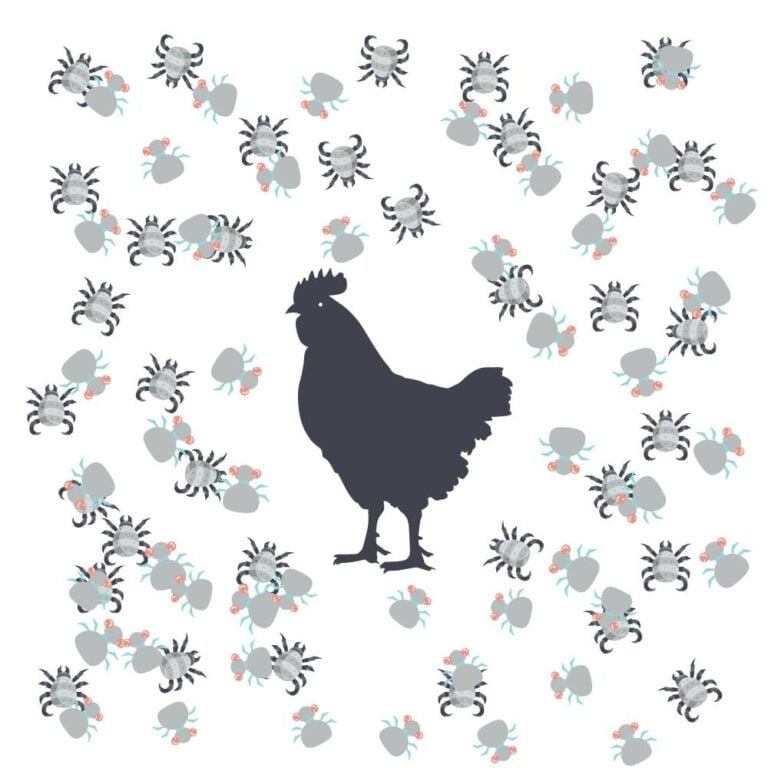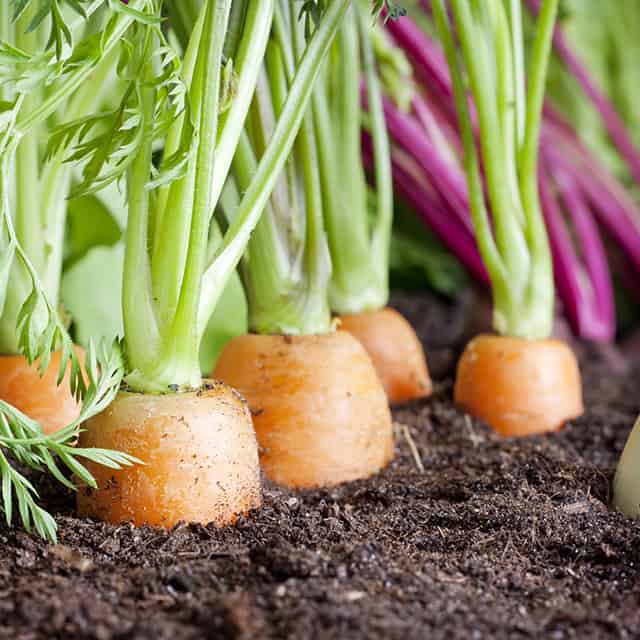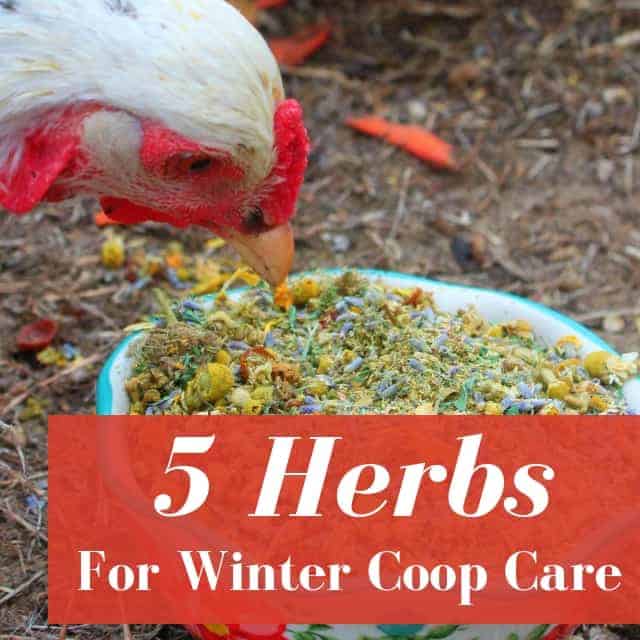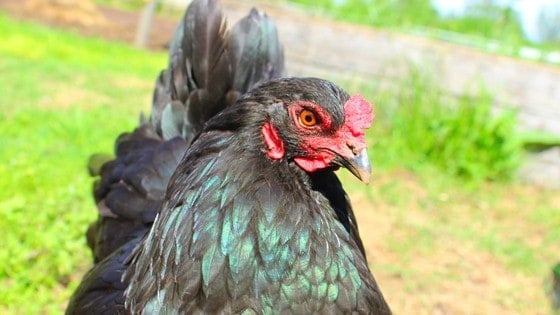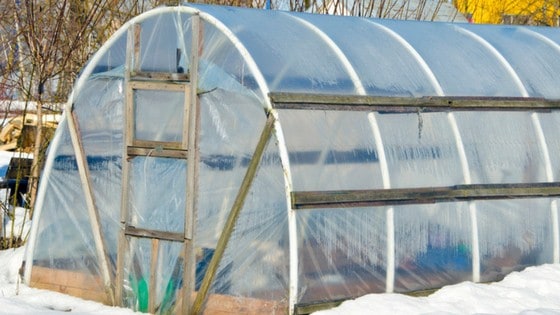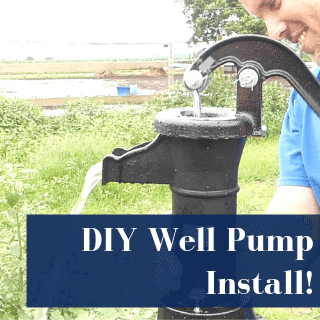Heard heated chicken waterers can make life easier, but aren’t sure which to buy? Not even sure they’re safe? In this article, we’ll tell you everything you need to know!
For people like us, who raise animals out of the comforts of a heated home, cold is a serious problem. If the temperature drops too far, water freezes. While some animals can break ice – with breath and a hot tongue, or a beak – there are limits to what these resources can do. And when temperatures plummet, dehydration can be a major problem for your fur or feather babies. One solution – heated chicken waterers – are a simple method of providing water to your flock. Today we’ll look at the kinds of heated waterers available for our chickens.
Table of Contents (Quickly Jump To Information)
Our Favorite Heated Chicken Waterers On Amazon:
Do Chickens Need to Drink Water?
Oh yes, chickens absolutely drink water. It might be funny to watch them – they fill their mouths and then tip their heads back – but water is an absolutely necessary part of their daily diet. Actually, an adult chicken will drink a few cups of water per day. Get a group of 20 chickens together, and they’ll likely go through as much water per day as a cow.
Are Heated Chicken Waterers Safe?
Mostly, yes. You need to watch out for how hot they get, and how much electricity they draw. It’s best to look at your user manual and reviews online for the specific unit you’re considering.
Are There Different Types Of Heated Chicken Waterers?
Not including home-made, there are three different types of heated chicken waterers:
Automatic Waterers
These waterers contain a basin that has one or more openings at the base that open only when chickens use them. These are generally clean, neat, and very hygienic. Depending on the valve, these waterers also avoid dripping water and frozen puddles beneath them. However, some parts are more prone to freezing.
Gravity-Type Waterers
These operate under the same principle as the automatic waterers, save for one major difference: the distribution method. These jugs generally are attached to an open pan (also known as a “drinker”) that your chickens will drink from. Because they are open, you run the risk of your birds contaminating the pan. The drinkers are also pretty easy to break off.
Open Pans Or Dish-type Waterers
These are often a pan set out over a heated base. They run the same risk of contamination as the gravity waterers, which will require more scrubbing than, say, the automatic waterers. Elevating them off the ground in the heated base will help to reduce the muddying of waters.
What Makes The “Ideal” Heated Chicken Waterer?
This is a complicated question. There are several key elements to consider:
- How cold does it get in your area?
- How many chickens are in your coop?
- What material works best for you?
- Should it rest on the floor or be elevated?
- Is it durable enough or will it freeze?
Affordability is another concern. Some options – like batteries – can cost a lot over time. Some heated chicken waterers (especially the do-it-yourself variety) could put unnecessary stress on your wallet. How many chickens have you got? The answer to this will determine the size of your waterer, as you don’t want to be slogging out into the cold every couple of hours to refill the water of your birds. In other words, the ideal waterer will completely depend on your flock. Just make sure it’s durable so in the event that the water does freeze, the container won’t rupture or break. Let’s further explore these questions below.
How Big Should It Be?
As previously mentioned, a flock of 20 birds will drink about as much as a cow – that’s a whole lot of water to provide. If your flock consists of fewer than 5 birds, a single 2-gallon waterer should suffice. Most single waterers range in size from about a gallon to 3 gallons. The heaters in heated chicken waterers are very adept at cooling off smaller areas, but anything larger than that could run into problems with the law thermal equilibrium, which states that temperatures will seek a balance. In extremely cold weather, some heaters might prove insufficient in warming large quantities of water. With the addition of more birds, you will probably need more heated chicken waterers. Some sources recommend having on three-gallon waterer for every 10 to 12 chickens.
What Kinds Of Automatic Valves Are There For My Heated Chicken Waterers?
Nipples are a type of automatic valve that is fast becoming a preferred method of watering chickens on cold winter days. These are designed to not release water until your chicken pokes it with their beaks. Floating valves are small cups of water. When your chickens dip their beaks into the cup, they press on a floating valve that releases fresh water into the cup. This provides a constant set amount of water in this hanging waterer.
Should I Use Plastic Or Metal For My Heated Chicken Waterers?
Ultimately, that is your call. Both materials are excellent in cold weather. Plastic waterers are durable and do not break easily. Galvanized metal also holds up very well in extreme cold BUT freezes faster than plastic. Both can be found with internal or external heaters, though plastic heaters usually have the heating element in the base.
Should I Hang My Heated Chicken Waterers Or Lay Them On The Ground?
This is an important question, that depends, in part, on what you have available in your coop or in your pen. One clear benefit of hanging waterers is you can raise it off the ground, and your chickens are less likely to roost on them (which means less poop). Elevating the water from the ground reduces the chances your flock will poop in it. Ground-based waterers don’t have to be messy, however. A waterer set upon a heating pad can still get that required height and also remain equally clean to hanging heated chicken waterers.
How Often Should I Refill My Heated Chicken Waterer?
The easy answer is “Whenever they need filling.” Since most waterers can hold upwards of a couple of gallons, they have a bit of staying power. Still, you should be checking your waterers at least once every day. That way, you can top off the containers when you see they need it, and you can see if they need to be cleaned. Your chickens might have made a mess of the waterers, and you’ll want to clean them up as soon as possible.
Are There Heated Chicken Waterers Without Electricity Needed?
Some heated chicken waterers don’t require electricity, such as solar powered heated waterers. Others include battery-powered heaters. You can read this article here for an excellent how-to that breaks down a number of means of keeping your chickens hydrated – and all without electricity!
What About Solar Heated Chicken Waterers?
The simplest solution would be to have a large black tub that is not too tall for your chickens to reach. Place this into the sunniest part of the coop, and over the course of the day, the heat from the sun might prove to be enough to keep your flock hydrated. In colder climates, however, this might not work as well, and alternative heating might be required.
Are There Do-it-Yourself Heated Chicken Waterers?
There are a number of sources out there across the internet that offer solutions for homemade water heaters. Here’s 2 that we like:
Where to Find Heated Chicken Waterers?
You can usually find them at farm stores, like Tractor Supply. You can also find them on Amazon here:
We hope this information about heated chicken waterers helps you keep your chickens hydrated and healthy, even through the bitter chills have arrived! Stay warm!
Maat van Uitert is a backyard chicken and sustainable living expert. She is also the author of Chickens: Naturally Raising A Sustainable Flock, which was a best seller in it’s Amazon category. Maat has been featured on NBC, CBS, AOL Finance, Community Chickens, the Huffington Post, Chickens magazine, Backyard Poultry, and Countryside Magazine. She lives on her farm in Southeast Missouri with her husband, two children, and about a million chickens and ducks. You can follow Maat on Facebook here and Instagram here.

